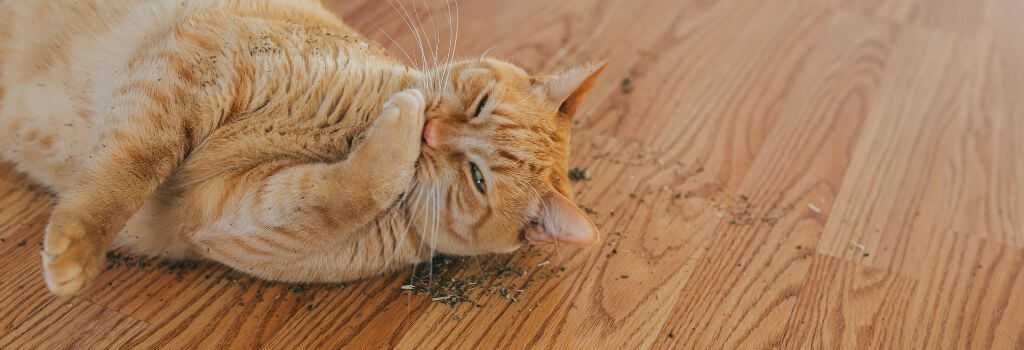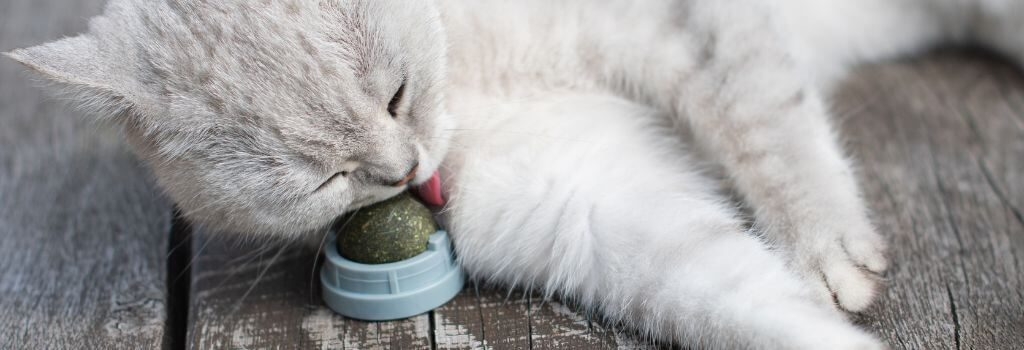Catnip is one of the most fascinating herbs when it comes to feline behavior, often turning even the calmest cats into playful, energetic furballs. If you've ever wondered what makes catnip so irresistible, how it works, and whether it’s safe for your cat, you're not alone. In this blog, we’ll dive into everything you need to know about catnip, including its effects, safety, and fun ways to use it.
What Is Catnip?
Catnip (Nepeta cataria) is an herb in the mint family, known for its ability to elicit euphoric reactions in many cats. Native to Europe and Asia, catnip has spread worldwide and is a common addition to gardens, toys, and even sprays for cats.
The magic of catnip lies in a compound called nepetalactone, which is found in the plant’s leaves, stems, and seeds. This compound triggers a unique response in cats, making it a favorite treat for pet owners looking to entertain their feline friends
Catnip Fun Fact: Catnip can even affect big cats like lions and tigers!

How Does Catnip Work?
When cats sniff catnip, the nepetalactone binds to receptors in their noses, stimulating the sensory neurons that connect to the brain. This triggers a chemical response similar to feline pheromones, which can lead to behaviors such as:
- Rolling, rubbing, or licking.
- Playful energy and zoomies.
- Purring or increased affection.
- In some cases, a calm, relaxed demeanor.
- Some cats, however, may become hyperactive or a bit territorial, especially if approached during their "catnip high."
The effect changes if your cat eats the herb—instead of playful energy, they may mellow out and relax. These playful or aggressive sessions typically last about 10 minutes, after which your cat loses interest. It may take up to two hours for their sensitivity to reset before they respond to catnip again.
Interestingly, not all cats respond to catnip. Studies show that about 70-80% of cats are affected, with sensitivity being hereditary. Additionally, kittens under 3-6 months and senior cats may show little to no reaction.
Can Cats Become Desensitized to Catnip?
Yes, frequent exposure can lead to desensitization. If your cat seems to lose interest, take a break from catnip for a couple of weeks before reintroducing it. This helps restore their sensitivity and keeps the experience fun and exciting.
Is Catnip Safe for Cats?
The good news is that catnip is entirely safe for cats. It’s non-addictive, non-toxic, and doesn’t pose any health risks when used in moderation. Cats instinctively regulate their exposure, typically walking away once they’ve had enough. However, excessive consumption (such as eating large quantities of dried catnip) can lead to mild digestive upset, like vomiting or diarrhea.
If your cat reacts strongly to catnip, limit its use to a maximum of a few times a week to prevent overstimulation. Always observe your cat’s behavior and consult your veterinarian if you have concerns.

How to Use Catnip with Your Cat
Catnip can be a great enrichment tool for cats, and there are many creative ways to incorporate catnip into your cat's playtime:
- Catnip Mice: These small, mouse-shaped toys are stuffed with catnip and are a classic way to entertain your feline friend. Cats love to bat them around, chase after them, and even carry them in their mouths, mimicking their natural hunting instincts.
- Catnip Balls: Soft, catnip-filled balls are perfect for cats who love to swat and chase. Toss one across the room to get your cat moving or let them discover the ball on their own for independent playtime.
- Catnip Bubbles: Add an exciting twist to playtime by using catnip-infused bubbles. You can purchase pre-made catnip bubble solutions or mix non-toxic bubble solution with liquid catnip. Blow bubbles for your cat to pop!
- Catnip Pillows: These small pillows are filled with catnip and offer a sensory delight. Your cat can roll on them, rub their face into them, or simply lounge next to them for a calming experience that engages their senses.
- Catnip Sprays: Perfect for rejuvenating old toys, encouraging scratching post use, or enticing your cat to explore their bedding, catnip sprays are an easy and mess-free way to add a little excitement. Simply spray a small amount on your chosen item and watch your cat take interest.
- Loose Catnip: Sprinkle dried catnip in a specific play area or on your cat’s favorite scratcher to encourage activity. It’s a simple way to engage your cat and let them enjoy catnip on their own terms.
- Grow Your Own Catnip: If you want a sustainable supply of fresh catnip, try growing it in a pot indoors or in your garden, just be careful to not use any fertilizers or insecticides that may be harmful to your feline friend. Not only is it fun to harvest fresh leaves for your cat, but catnip also doubles as a natural insect repellent for your outdoor spaces!
Alternatives to Catnip
If your cat doesn’t respond to catnip, there are other plants that might capture their attention. Recent studies have highlighted three alternatives with similar effects: silver vine (Actinidia polygama), Tatarian honeysuckle (Lonicera tatarica), and valerian root (Valeriana officinalis). While these plants don’t contain nepetalactone, they do have compounds that can spark similar reactions in cats.
If your cat is indifferent to catnip or you’re looking to switch things up, these plants offer new ways to keep your feline entertained and engaged. Silver vine, in particular, is a great option to explore for cats who seem immune to catnip’s effects. Many plants can be toxic to our feline friends, though, so always be cautious when selecting new greens for your cat to try!
Catnip Conclusion
Catnip is a safe and fun way to enrich your cat’s environment, offering both mental and physical stimulation. Whether your cat loves the zoomies or prefers a mellow vibe, catnip can bring joy to their day when used in moderation. By understanding how catnip works and exploring creative ways to use it, you can provide your feline friend with hours of entertainment and enrichment.
Always keep your cat’s preferences in mind, and don’t hesitate to consult your veterinarian if you have any questions about incorporating catnip into your cat’s routine.
If you have questions and you'd like to reach out to us, you can call us directly at (480) 948-1770, or you can email us at info@saguarovet.com. Don't forget to follow us on social media Facebook, Instagram.
